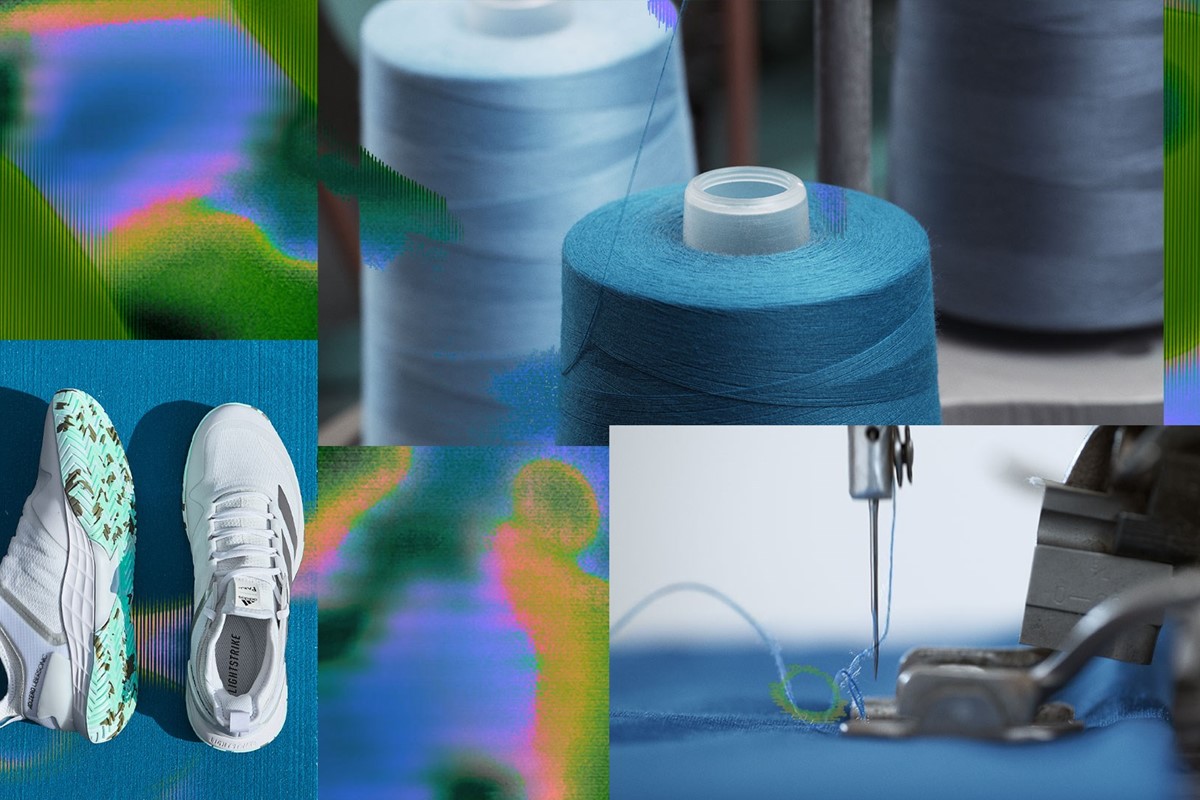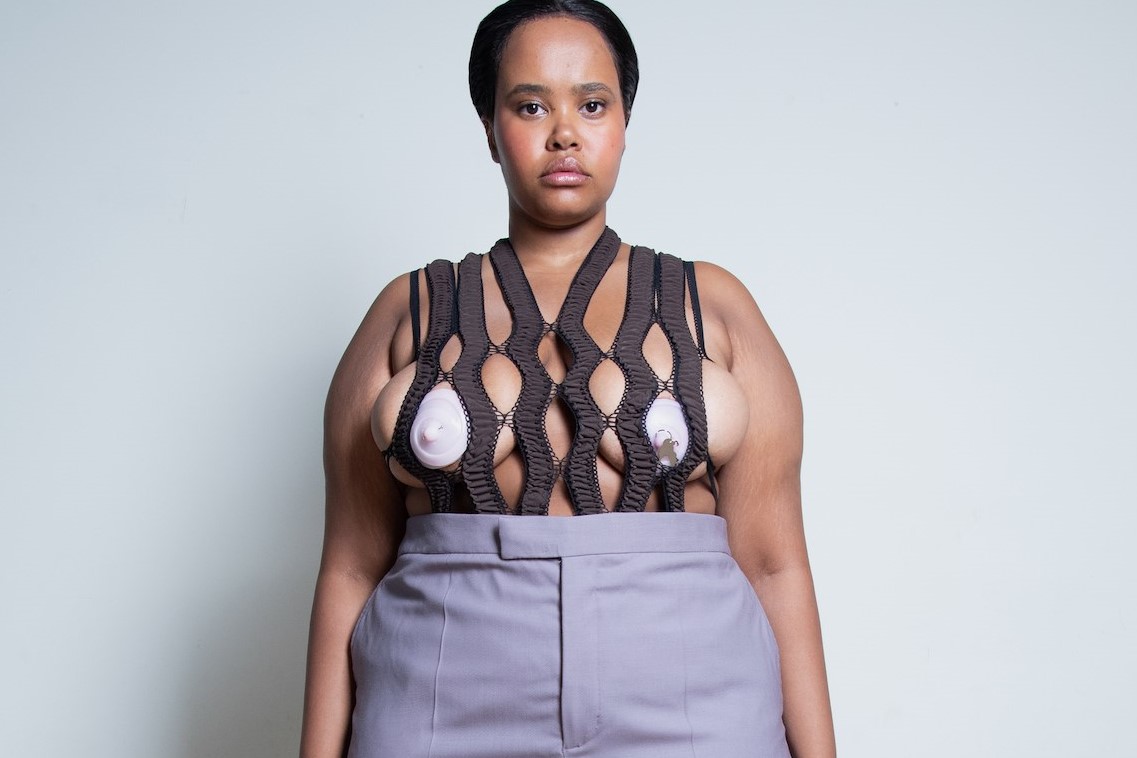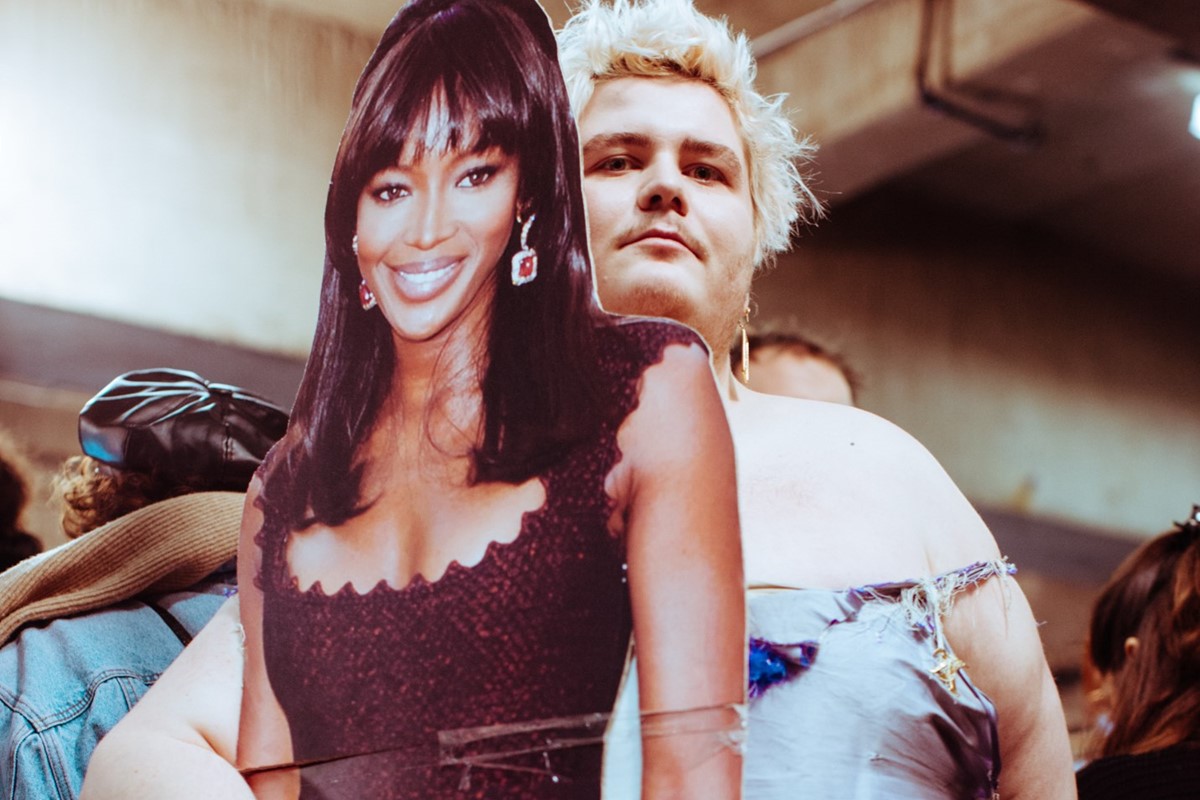
Text Emma Elizabeth Davidson
How do you hit sustainability targets in a pandemic? adidas’ Brand Sustainability senior director Marwin Hoffmann goes deep on their continued breakthroughs
In partnership with adidas Originals
Welcome to A Future World – Dazed’s network, community, and platform focusing on the intersection of science, technology and pop culture. Throughout April, we’re featuring conversations and mission statements from the people paving new pathways for our planet: activists, inventors, fashion pioneers, technologists, AI scientists, and global youth movements, alongside in-depth editorial exploring the new realities for our future world.
Unless you’ve been living under a rock for the last twelve months, you might have caught wind of the dire situation our planet is in. On both sides of the Pacific Ocean – an expanse spanning a casual 15,500 miles – wildfires ravaged the landscapes of New South Wales and California, while devastating floods swept through Western Australia and Indonesia across the course of the last few weeks alone. Meanwhile, ice in Greenland and Antarctica is melting at record rates, as entire ice shelves detach from the land and plunge dramatically into the sea.
The point of no return may allegedly be looming, but the hope that we can reverse a catastrophic chain of events in time burns bright among a new, galvanised generation. From Greta Thunberg and her ongoing school strikes, to Extinction Rebellion’s worldwide civil disobedience, people are fighting back in a bid to rally the world’s leaders to take action. While we, as individuals, have a huge role to play when it comes to living more sustainably, the biggest responsibility lies with the conglomerates and corporations that have the power – and the resources – to turn things around.
Taking its position as a pioneer within fashion and sportswear particularly seriously is adidas. Across the course of the last two decades, the German behemoth has rehauled its processes and invested massively in sustainable innovations. Things really accelerated in 2015, however, when adidas partnered with Parley for the Oceans for the first time, as part of a project that would become a long-term, ever-evolving collaboration that utilises recycled plastic debris that has been intercepted on remote islands, beached, coastal communities and shorelines. And now, as it joins a consortium of companies investing in biotech materials, its efforts have amped up even more.

“As a company, we have an intrinsic desire to see new possibilities everywhere,” explains Marwin Hoffmann, adidas’ Brand Sustainability Senior Director. “By 2050, we have the ultimate goal to achieve global climate neutrality.”
The pandemic may have unsurprisingly thrown a spanner in the works, but the label still managed to hit a milestone target in 2020 – 50% of the polyester used was recycled. By 2024, virgin polyester will be eradicated from its collections. Alongside sneakers utilising algae, explorations in biotech, and extensive Parley collections, last December saw adidas announcing a new generation of Stan Smith, with the upper made of PRIMEGREEN, a series of high performance recycled materials. And according to Hoffmann, they’re just getting started.
Now, as part of Dazed’s A Future World series, adidas selected artist Kris Andrew Small to create an artwork that outlines its mission statement for the future. Bearing his signature bold colours and 90s flourishes, Small’s poster of protest calls for the end of plastic waste – a reflection of adidas’s own intentions, and a reminder to us all to do our bit. As the poster gets its debut, we sit down with Hoffmann to discuss the brand’s sustainable efforts.
Hey Marwin! So, first question: what did adidas’ sustainability efforts look like when you first joined the company?
Marwin Hoffmann: That was back in 2005, and I remember thinking that there were already steps being made in the right direction, but things really started accelerating soon after. When it comes to involving the consumer, I think the journey really started in 2015 when we started our partnership with Parley for the Oceans and launched that unique shoe made made in part with recycled ocean plastic. That was a real shifting point when it comes to consumer-facing strategy, and a huge milestone for adidas. Up to that point, the efforts had been very internal-facing and not shared with the outside world so much. You have to get it right in the back office before you can start talking about it.
What does a working week look like for you?
Marwin Hoffmann: It’s pretty difficult to pin down what I do in a ‘standard’ week because it’s constantly changing. Recently things have been super exciting as we’ve been working on finalising our sustainability strategy for 2025 across the board – from operations, to design, to comms, and beyond. It’s been quite some work, but it’s absolutely crucial for us all to be aligned.
What are you working on right now?
Marwin Hoffmann: We’re actually already focusing on the spring/summer 2023 collection, working closely with all the different arms of the business to really shape what that looks like. Obviously we’re always doing this with sustainability in mind, and we’re really pushing that to the max right now. This year has been a crazy ride with COVID19, but we’re accelerating so fast in terms of sustainability – there’s been this big pull from the markets and desire from our customers. It’s not really something we had to push, which is nice.

Back in December, adidas reported that 60 percent of its products would be made from sustainable means. Can you talk me through your next targets when it comes to use of sustainable materials, and how you plan to get there?
Marwin Hoffmann: We have a lot of goals that are clustered together in the short, medium, and long term. By 2024, our aim is to use 100 per cent recycled polyester, which means that we would not be using virgin polyester in any of our products any more, which is a huge ambition. By 2030, our goal is to really reduce our carbon footprint by 30 per cent as part of the UN Fashion Industry Charter for climate action. And finally, by 2050, we have the ultimate goal to achieve global climate neutrality. And we know perfectly well that we will not be able to do that alone, so we’re working with the most innovative, intelligent partners inside and outside of our industry. We’re investing in the development of products, and moving towards circularity to give a longer lifespan to the materials we use.
What kind of challenges have you faced while pushing towards these targets?
Marwin Hoffmann: I think the biggest obstacle for me is that to really have impact – long-term impact – most of the sustainability initiatives often take time to develop over a number of years. You know, you have to learn, you have to wait, you have to learn more, and then impact will come after two, three, four, five years. But as you can imagine, as a sports brand we’re extremely driven – most of the people working at adidas are doing sports every day, or have a sports background, and we all want to push the boundaries as quick as possible. So I guess sometimes we can be pretty impatient – we try to do things as fast as possible. But in sustainability, you have to have patience, because if not, it doesn’t work. So this is what I have to coach my team and our wider teams on.
“An interesting thing within the sporting goods industry is that we are all super competitive, but when it comes to the challenges we face in our fight for sustainability, there won’t be one brand or one company that will win. It’s something we need to do together” – Marwin Hoffmann
adidas recently invested in biotech company Bolt Threads, which is pioneering sustainable textiles like mycelium (‘mushroom’ leather), bio spider silk, and algae. Are you working on or utilising any other promising technologies as part of the company’s bionic loop?
Marwin Hoffmann: I would love to explain everything we have in the pipeline to you, because obviously there’s a lot of exciting stuff coming, but unfortunately we can’t disclose that information as of right now – but stay tuned in the next couple of months.
Do these new fabrications limit what you can do aesthetically or performance-wise? Or otherwise, have they opened up more possibilities?
Marwin Hoffmann: I think that’s a very important question, especially within the sporting goods industry, because for us, it was very, very clear that our goals with all our sustainability endeavours, they always have to demonstrate that there can’t be any compromise between sustainability and performance. So everything we developed has to be as good, or even better, for the athlete or the wearer. It might mean that things take longer or that they’re more difficult, but we strongly believe that there doesn’t need to be a compromise between performance and sustainability. This is our biggest aim at adidas.

What innovations or practices fill you with the most hope?
Marwin Hoffmann: Our attitude internally really motivates me. As a company, we have an intrinsic desire to see new possibilities within the sea where others only see the impossible. To pick one example on that point, in 2018, our then-CMO announced our target to use only recycled polyester by 2024. It was considered a moonshot because in 2018 everyone was still pretty sceptical that we could achieve that goal – people were looking at us like ‘you guys are crazy, it will never work!’ But we are absolutely on track to eliminate virgin polyester by then. I love that as a brand we take these risks and we’re never, never afraid of setting ourselves these very ambitious targets. When it comes to sustainability, you have to take certain risks, even if you don’t have the answers right now.
Who do you feel, in fashion or beyond, is doing monumental work when it comes to fashion right now?
Marwin Hoffmann: There are lots of really fresh, hot, small brands doing an amazing job in showing their commitment to the planet, but at the moment, I would pick out two key players. I think Parley for the Oceans is a great example. They really push the industry, which is why we’re partnering up with them. (Founder) Cyrill Gutsch doesn’t want to stand still, and he’s not blindsided in the sense of working in a big corporation, which I love. Sometimes what he’s telling us to do sounds crazy, but if you think about it from an external perspective, it’s like ‘yeah, he’s right, so let’s do it’. Otherwise, I would call out Allbirds, who we are also working on a partnership with. They really went down the road of putting their CO2 footprint on their shoes and making people aware that carbon emissions are a threat to the planet.
What’s next for adidas?
Marwin Hoffmann: A very interesting thing within the sporting goods industry is that we are all super competitive, but the industry is waking up to the realisation that, when it comes to the challenges we face in our fight for sustainability, there won’t be one brand or one company that will win. It’s something we need to do together. We need to work together with other companies, with other brands, to get better sourcing, to work on sustainable solutions. We won’t be able to fix things alone, so let’s work together to help our planet.



